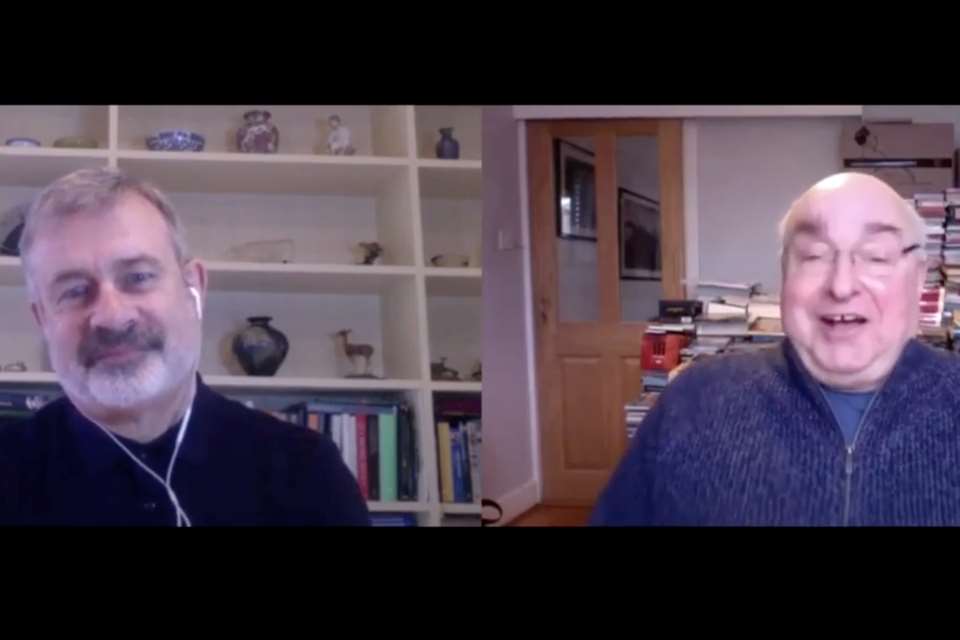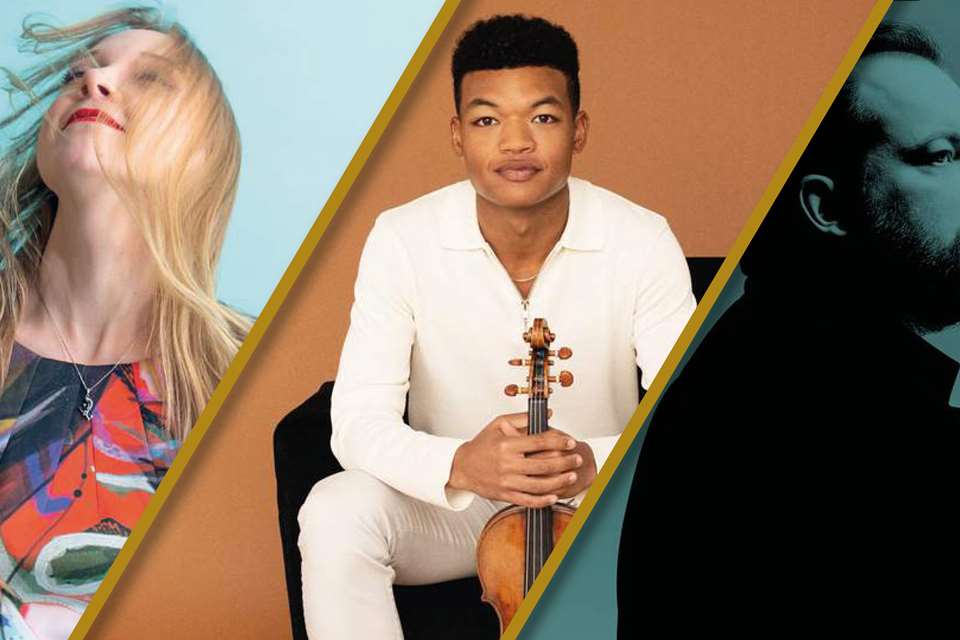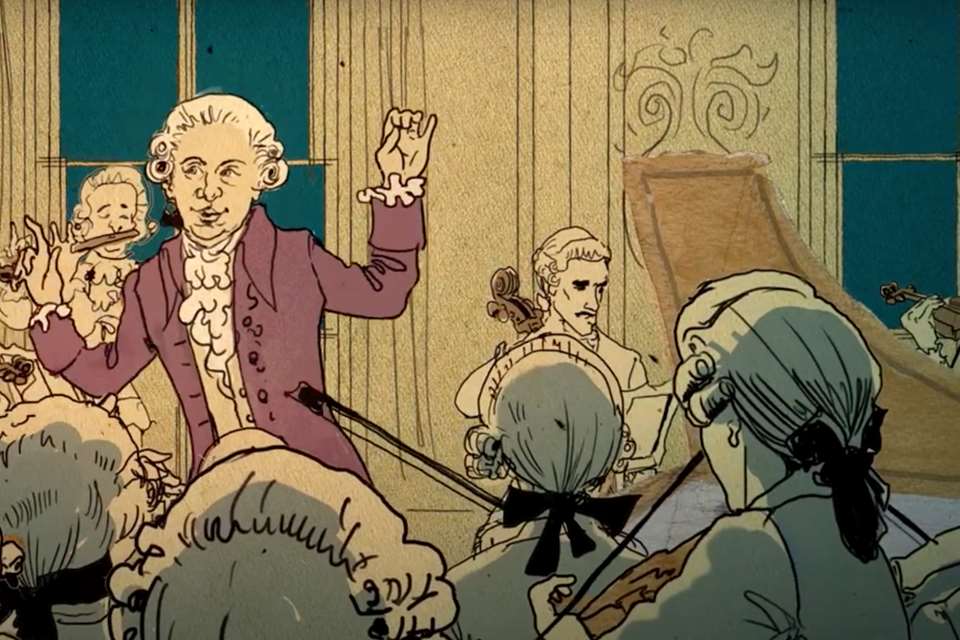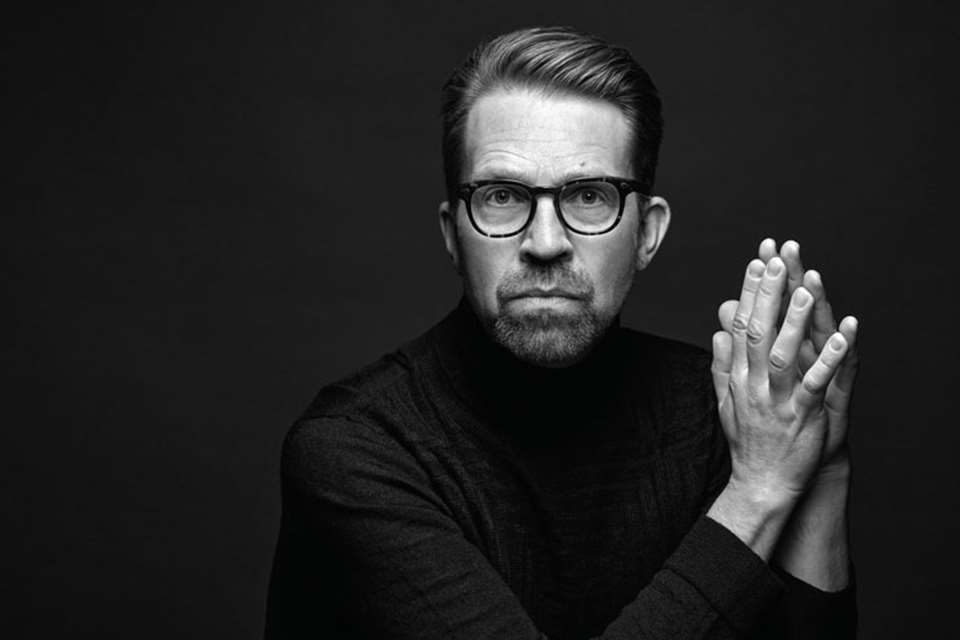Was Wolfgang Amadeus Mozart the greatest composer of all?
Tuesday, May 25, 2021
Sir John Eliot Gardiner, Nikolaus Harnoncourt, Sir Neville Marriner, Sir Roger Norrington and Mitsuko Uchida discuss Wolfgang Amadeus Mozart's extraordinary musical legacy
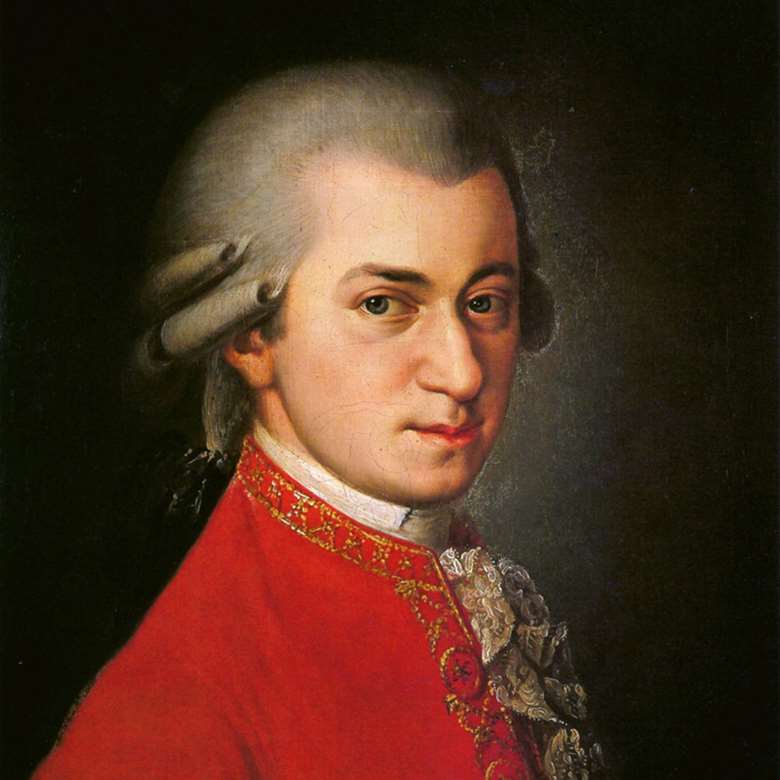
There are myths and there are truths, and the former are often more entertaining than the latter. In Mozart's case, we have the glorious truths of his music but the true facts of his life have often been clouded by the mists of time and by tall tales. Our perception of Mozart has been moulded by legends. If he seems to loom larger than life, it is partly because each generation reinvents this composer for itself. There sometimes seem almost as many Mozarts as the staggering number of compositions that he left us.
The bare facts. Johann Chrysostom Wolfgang Amadeus (or Gottlieb) Mozart was taught music by his father Leopold, a respected theorist, composer and violinist at the Salzburg court. (It seems likely that his education also included mathematics, languages, literature and religious training.) The child prodigy was taken on exhausting concert tours all over Europe and his skill as a composer benefited enormously from his experiences in Italy, Germany, France and England. After such an itinerant life at many of the most important royal courts and musical cities in Europe, it is little wonder that after reaching adulthood Mozart could not settle at Salzburg, which he considered to be a provincial backwater. He spent the last 10 years of his life in Vienna, moving house frequently according to his economic circumstances. Mozart died of a severe rheumatic fever on December 5, 1791, a few weeks short of his 36th birthday.
The Shaffer Effect
The most influential and widespread impression of Mozart was created in Milos Forman's 1984 film Amadeus which, with barefaced cheek, was advertised with the mendacious slogan 'Everything you have heard is true!' Adapted from a play by Peter Shaffer, Amadeus introduced legions of cinema-goers to the exuberant perfection of Mozart's musical genius. It firmly convinced its audience that the under-appreciated Mozart was an innate genius from childhood, doomed to be buried in an unmarked pauper's grave after being driven to a miserable premature death by his jealous enemy Salieri.
The truth is less melodramatic. Mozart had sufficient reason to be optimistic about the immediate future — with commissions flowing in and his reputation and bank balance once again on the up — right until his final illness. Salieri was among the few mourners at the funeral organised by Baron Gottfried van Swieten at St Stephen's Cathedral. Mozart's burial outside the city in a communal grave was in accordance with the prevalent custom of the time, influenced by Emperor Joseph II's reforms, proposed in 1784, encouraging simple, economical and hygienic burials. Furthermore, a group of Mozart's friends gathered for a memorial service at St Michael's Church organised by Emanuel Schikaneder (librettist of Die Zauberflöte and the first Papageno), at which members of the court orchestra and choir performed part of Mozart's unfinished Requiem.
Yet there were some accuracies in Amadeus: Mozart did not enjoy an easy relationship with his father, nor with his Salzburg patron Archbishop Colloredo. It seems he was not prepared to accept Joseph II's alleged criticism that Die Entführung aus dem Serail contained far too many notes. He did not shy away from controversy in setting Lorenzo da Ponte's libretto Le nozze di Figaro, based on a play by Beaumarchais that had been banned by Joseph II for its seditious content (although Joseph fully accepted the operatic version).
Mozart's letters reveal an unpredictable man capable of every characteristic — ranging from childish pranks to vulgar humour, artistic passion, emotional yearning, melancholy, intellectual solemnity and emotional depth. The most important truth communicated in Amadeus was that these elements abound in Mozart's music. They continue to resonate strongly with us, not least with the great interpreters of his work.
Timeless Genius
Mitsuko Uchida supports the portrayal of Mozart as a child genius: 'I find his music mysteriously beautiful, and he becomes more mysterious as he gets older. He has such special expressions. It is very clear he was born a genius.'
Nikolaus Harnoncourt concurs. 'The incredible thing for me is that there is no young Mozart or old Mozart. His genius is there from the moment he starts writing. I don't see ranking in the quality of Mozart's work. I cannot say this is a better work than that. I don't make a difference between youth and the end of his life.'
Barbara Bonney enthuses: 'Every time you are involved with a concert, opera or a recording session it is an uplifting experience. There is a reason why they play Mozart to babies to enhance their IQs — it is written with such perfection. When you look at his scores, such as the original manuscript of The Magic Flute, it is amazing how perfectly it is written down, as if he was dictating it from another place. It seems inconceivable that anybody could be so talented. It is so perfect, and that is how the music feels in your throat or under the fingers. It has a physical feeling of perfection to it.'
A Question of Performance
Mozart's symphonies have consistently been at the forefront of the discography. Sir Neville Marriner remembers that the Academy of St Martin in the Fields 'was very accommodating when the big surge of companies recording everything anybody had ever written began. In order to make the catalogue complete record companies were looking for orchestras of the right size and scale to play Mozart, so we were lucky that the Academy had the reputation of being ideal for 18th-century music.' Marriner notes that 'when we started performing classical repertoire we tried really hard to seek out the bones of the music and then added the colours. Every member of the Academy wanted to achieve clarity and to be an important part of the structure.'
Christopher Hogwood in turn hails Marriner as being at the forefront of what he terms 'one of the biggest revolutions that occurred in the last half of the 20th century...to hear chamber orchestras playing Mozart. People like Sir Neville Marriner showed the musical public that a really serious classical symphony could be played by only 25 people instead of more than 75. The alteration in size also affected balance, with the woodwind becoming more prominent, revealing so much more of Mozart's colours.' This philosophy certainly informed Hogwood's own series of Mozart's symphonies with the Academy of Ancient Music, which started in the late 1970s with what was then considered to be the radical use of period instruments. It is not only Mozart, it seems, whose personality is altered by each generation — it is his music.
The earliest of Mozart's 27 piano concertos was written at Salzburg in December 1773 but most of them were composed during his final decade in Vienna. Christopher Hogwood observes that in this repertoire 'it had got to the point where even though performances of Mozart's piano concertos were lovely, the result could seem static, frozen and fixed. But in our series of performances and recordings Robert Levin always played a different instrument to keep things fresh, and played continuo — creating a sense of social interaction with the orchestra that made it feel more like a jazz band'.
Levin improvises cadenzas that are different in each performance and admits that his adventurous approach to improvising ornaments and cadenzas gives him a feeling that 'is a combination of elation and utter panic — and it never changes, it never gets easier. When I was younger, I would try to imagine a cadenza going in a certain direction, as if you are giving directions for somebody trying to find a place, but I would get on stage and then I would make the same mistakes as the person looking for the petrol station: they turn right, but take the wrong right. Things would go awry. But even Mozart, with his infinitely greater abilities, probably had to improvise the cadenza once in his life. I have to do it 50 times, so then you run the risk of repeating yourself. Even if you are resolutely dedicated to doing things differently, it takes an increasing amount of energy to bind things together in a way that sounds fresh'. Yet Levin remains enthusiastic about the rewards of this approach: 'Every time I do this, the audience is in a state of involvement and engagement which is rather different than when it is only about how persuasively you are pronouncing the written text.'
Mitsuko Uchida believes that 'Mozart's piano concertos are like operas in their sense of exposure and the way they hit the public. However introverted some of the movements may be, these are pieces written for public performances. Whereas the violin sonatas still retain the sense of an intimate and introverted world where you can be virtually alone. It is just a conversation between the violinist and you. So you can also have fun, and be able to joke and laugh about it'.
Sir Roger Norrington is 'fascinated with trying to find out how to play Mozart in a suitable manner, in a way that comes from Handel and Bach rather than from Wagner and Brahms. I've always tried to perform his pieces so that if Mozart came into the room and stood at the back, he might like what he heard — and that he would have recognised it!' Norrington cites his pioneering EMI recordings of Don Giovanni and Die Zauberflöte as examples of how 'we realised the fundamental importance of dance rhythms and forms in Mozart's music, which all came from the Baroque.' Sir John Eliot Gardiner agrees: 'Mozart is the culmination of all the music I cherish from the 17th and 18th centuries. I see him very much in that light, rather than as the precursor of the more glamorous music of the 19th century.'
The historically informed performance of Mozart's music on period instruments was pioneered by Nikolaus Harnoncourt, who remarks: 'I played Mozart as a cellist from childhood on. Then my estimation of his music as unique came as an orchestral musician in the 1950s. But then it became a kind of anger, or hate, about the way it was performed. This was finally the reason why I left the Vienna Philharmonic Orchestra in 1969. Although my estimation of Mozart did not change, maybe the approach changed a little bit.' Harnoncourt insists that Mozart 'always writes dramatic music. Whether it is a violin sonata, piano sonata or his early symphonies, I can always see different persons, different discussions. He always wrote operas. When I perform especially the Salzburg works, I always emphasise this view'.
A stimulating blend of the modern- and period-instrument worlds has been developed by Sir Charles Mackerras, who acknowledges that 'it has been very revealing to me how the instruments that Mozart knew affect the tempo. Also the lengths of notes — this can often make a huge difference, with shorter notes fading much quicker with period instruments. Even when holding out a long note, it still dies much quicker. Both of those things have really affected my view of how Mozart should be played'. Mackerras often uses period trumpets, horns and timpani when performing Mozart with modern-instrument groups. 'I used to notice that during Mozart and Beethoven performances the trumpets always sounded too loud or too soft. If they played with sufficient bite they overpowered everything; but if played softer then they lacked the particular energy that was needed. I immediately noticed when I started working with period instruments that natural trumpets can play as loud as they can to get the energy but it doesn't overpower everything else.' Where once upon a time the modern-instrument world regarded the early music movement with suspicion, Mackerras reports that 'nowadays players in symphony orchestras with whom I do Mozart are all most willing to try using natural trumpets'.
Divine Intervention
It is peculiar that Mozart is beloved by choirs all over the world when his fame as a composer of choral music rests squarely on two unfinished works, dating from each end of his years in Vienna. Mozart started work on his great C minor Mass sometime between his marriage to Constanze Weber at St Stephen's Cathedral on August 4, 1782, and writing to his father on January 4, 1783, that 'there is the score of half a Mass, which is lying on my desk in the best of hopes'. The ornate blend of Italianate operatic solos and Handelian fugues in the C minor Mass were contrary to Joseph II's restrictions on musical performances in the Viennese Church. Mozart probably abandoned work on it when he realised it would never be performed in Vienna, although much of the music was recycled with Italian words in the oratorio Davide penitente.
The Emperor's preference for simplicity in liturgy prevented Mozart from completing any large-scale church music during his finest years. That lack of opportunities to compose ambitious choral works is probably one of the reasons he accepted an anonymous commission to compose a Requiem Mass. Scholars have established that the commission came from Count Walsegg-Stuppach, a fellow freemason whose wife had died on February 14, 1791. Before embarking on the Requiem, Mozart had to complete Die Zaubeflöte and was further distracted by an invitation to compose La clemenza di Tito to celebrate the coronation of Emperor Leopold II as King of Bohemia.
Mozart's letters occasionally reveal a deeply religious character. Nikolaus Harnoncourt strongly believes that 'Mozart deeply understood the Catholic service from the beginning of his career. Mozart's church music is deeply Catholic and full of inspiration. The way he understands and describes the three words "Kyrie, Christe eleison" is like a translation and interpretation. "Eleison" means much more than just "have mercy". It can mean "why don't you have mercy?" or "thank you that you granted my wish". There are thousands of translations that you can find in Mozart's church music. In settings of Agnus Dei, the "Dona nobis pacem" is sometimes a scream of not being in peace but in a terrible conflict, or a plea for help. Sometimes it is like a "thank you that you have given us peace", when it is almost like a waltz where everybody is dancing in Heaven.'
Sir John Eliot Gardiner suggests that 'if you want to discover the religious side of Mozart's genius, you would look for it more in his operas than in his church music'. Gardiner believes that each of Mozart's greatest operas possesses its own character and personality. 'I imagine it would be almost impossible to extrapolate an aria from any one of the big seven mature operas and reallocate them to another without one sensing an uncomfortable big crashing of gears or of mixed metaphor. But I have to say that whatever Mozart opera one is doing at any one time is always the one you currently think is the best!'
Sir Colin Davis praises the relevance of Mozart's operas to modern audiences. 'They teach us to forgive ourselves for our own sins, in the most beguiling way possible. Except Don Giovanni, they are all about reconciliation: all the quarrels are resolved in the end. One also gets the feeling that Mozart loves all his characters, good or bad — it doesn't make any difference.'
The God of Music
For many performers, taking on Amadeus is a great privilege, and a heavy responsibility. Barbara Bonney, who names Susanna as her favourite Mozart role ('You are the motor that drives the entire show'), finds that Mozart demands, 'the purest and most honest form of singing. But Mozart was completely in love with pure high voices and women with lots of character. So one also has to have a big personality because the purity alone is not enough. You have to be a little bit worldly wise'.
For some, interpreting Mozart is nothing less than an act of devotion. Sir Colin Davis exclaims: 'Mozart is the god of music, so I have to serve him extra specially well!' What specifically does he seek to unearth? 'Everything I can find!' he retorts.
The dizzying variety of decisions about how to play Mozart's music has given the repertoire fresh impetus and enriched the discography. But neither historical curiosity nor the wish to make a good tune sound attractively packaged are enough to explain the immense significance of the anniversary we are celebrating.
Christopher Hogwood refers to Joseph II's observation that Die Entführung aus dem Serail contained 'too many notes' and the composer's spirited response: 'I think Mozart expressed it perfectly when he insisted that "there are just the right number, no more or less than I desire". Mozart matters to me as an interpreter because of this sense that every note is consequential.'
Even after all his years of delving into Mozart's treasures, Nikolaus Harnoncourt remains in awe: 'The greatest art — not only music, but painting, sculpture, architecture and writing — is so unbelievable because of its message. I cannot understand how human beings can do this. There is some kind of kiss of the muses, like Beethoven describes in Prometheus.' What matters for Sir John Eliot Gardiner 'is the incomparable humanity and probing psychology that Mozart's music displays. At its sublime best Mozart's music contains a feeling of purity that remains an object of utter wonder. More than any composer, he can capture the paradoxical emotional impressions of innocence and complexity.' Marriner puts it even more starkly: 'Mozart is the composer who provides the most sophisticated human emotional experience.'
Sophisticated, but for Mitsuko Uchida, utterly natural. 'Mozart is special for the whole of humanity because it is not about grand ideas or great concepts, it is about "I love you", "you may love me", "I am sad", "you are so happy". It sounds simplistic but at the core of it he is like Shakespeare: he uses the simplest means to elevate us into a universal world of absolute joy and sorrow. Mozart transcends the trivial. We all behave stupidly when we are in love but Mozart is the only one who can take that and make it into sublime beauty.'
Not to forget the utterly addictive quality of the music. Robert Levin: 'Mozart also leaves us dependent on him. Towards the end of a piece you sense it will soon finish and you get a withdrawal feeling. You want to plead with him as if you are a child wanting another bedtime story. And he is like a parent who gives you a little bit more, a wink, and then says "Enough now! Off to bed with you!"'
This article originally appeared in the January 2006 issue of Gramophone.
Welcome to Gramophone ...
We have been writing about classical music for our dedicated and knowledgeable readers since 1923 and we would love you to join them.
Subscribing to Gramophone is easy, you can choose how you want to enjoy each new issue (our beautifully produced printed magazine or the digital edition, or both) and also whether you would like access to our complete digital archive (stretching back to our very first issue in April 1923) and unparalleled Reviews Database, covering 50,000 albums and written by leading experts in their field.
To find the perfect subscription for you, simply visit: gramophone.co.uk/subscribe




